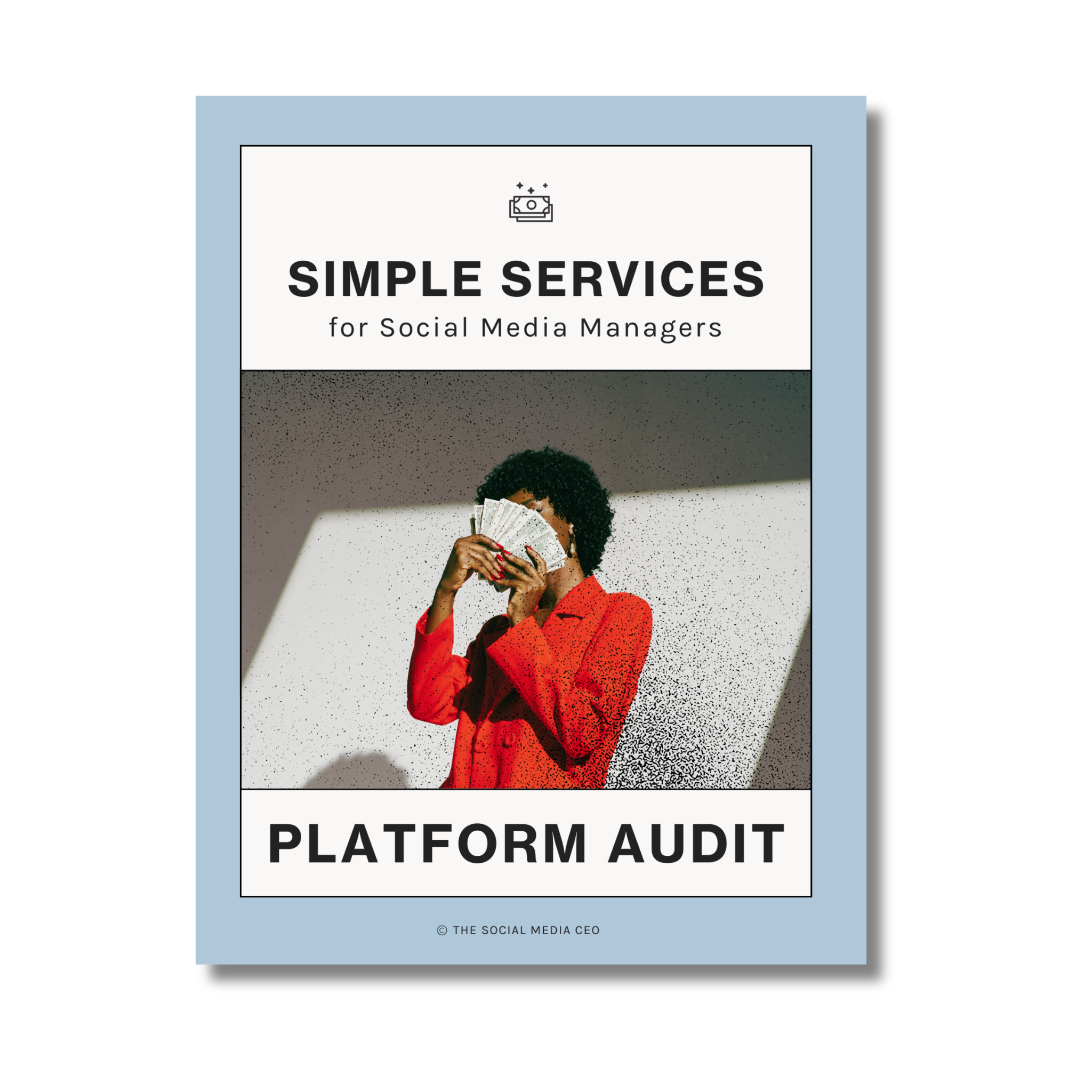You want to go above and beyond for your clients. You take pride in being able to provide an impactful, valuable social media service and a professional, supportive client experience!
But everyday we hear from social media managers, like you, who are exhausted from constantly over-extending themselves for clients, at the expense of their own mental health & team morale.
In our experience, over-delivering almost always leads to resentment and burnout – things we want to help social media managers avoid at all costs!
The good news is, it’s totally possible to support your clients in a premium, professional way, while still establishing clear expectations & maintaining your own business’ boundaries.
No more bending over backwards & burning out!
Here are 5 business boundaries & expectations to establish with your clients as a social media manager…

1 | Office Hours & Holidays
Social media is available 24/7 – which can cause social media managers to feel like they need to be too. But this “always on call” mindset is a huge reason why burnout is so prevalent among social media service providers.
We work in marketing, not the ICU, and it’s extremely important that you establish clear boundaries around your work schedule– in order to protect your personal time & mental health, as well as your team’s.
If you happen to miss a TikTok trend because you were spending time with your family over the weekend, we promise there will absolutely be a new one to hop on by Monday morning.
Of course, this doesn't mean you can’t go above & beyond for a client request that falls out of bounds once in a while. Just keep in mind that all that bending over backwards should never come at the cost of someone's well being or established company culture.
Pro-tip: The simplest way to relay your office hours and holiday availability to your clients is by including it in your onboarding process & reviewing it during a call prior to kicking off their service.
2 | Approved Communication Channels
Establishing a preferred method or channel for communication helps you keep all the important stuff in one place & everyone on the same page.
If you don’t want clients texting or calling you, it's probably not a good idea to give them your personal phone number. If you prefer to handle all client conversations through a platform like Slack or Voxer, versus email, be sure to let clients know that expectation ASAP.
Keep in mind that some clients may not be familiar with your business’ preferred communication channel – especially if it’s not traditional email. You can make the learning-curve smooth & professional simply by including a few “Getting Started” tips for your communication channel during onboarding.
Pro-tip: An easy way to get your clients set up on your communication channel of choice is to do it together, during your onboarding call!
3 | Timelines & Deadlines
How long will it take you to start posting on my Instagram account?
When can we schedule our strategy call?
What day will you send my first report?
Depending on the scope & deliverables of the services you’re providing, there will be different timelines and deadlines to communicate to clients.
You can use your client onboarding packet to outline these steps in order or to illustrate the different phases in your process. This will ensure there are no questions about what happens next & eliminate any misunderstandings around when things officially start.
Establish clear expectations & look like a total pro with this customizable Canva template — specifically for social media managers & digital marketers.
Ready to sweep a new client off their feet?! With this onboarding template you can create a smooth system that supports new clients as they enter into the working relationship – communicating, in detail, how you & your team operate, while highlighting exactly what you’ll need from them to get started on their services.
This template takes a new client through the onboarding process in a smooth, seamless way.
Simply add your own branded images & change the template’s colors, fonts, and other design elements to fit your business.
Not exactly your style? Browse our other Client Onboarding Templates!
4 | Approval Process
If your clients are going to be providing ongoing feedback, or requesting edits on copy & content, you’ll probably want to establish a clear approval process that outlines exactly how to communicate any desired changes or edits and when those requests are due.
The purpose of creating this process for content approval is to cut down on those stressful last minute requests & eliminate the need to chase down clients prior to publishing.
You may even want to consider establishing a limit on the number of revisions you’ll make to certain assets, which will allow you to keep your processes running smoothly and hopefully everyone's stress to a minimum.
Pro-tip: We know we sound like a broken record at this point, but review this approval process with your clients during your onboarding call. Get their verbal commitment to meet these expectations – making sure they understand that if they don’t approve content on time or constantly request things at the last minute can negatively impact their strategy & make it harder for you to get them results!
5 | Statement of Work to Establish Clear Deliverables
When a social media manager isn't crystal clear around their service deliverables or work boundaries from the onset, it keeps the door propped open for their clients to make additional - out of scope - requests.
What you need is a Statement of Work – which is a legally binding document that outlines all of the details and deliverables within a particular project – whether that be a one-off strategy session or ongoing monthly social media management.






